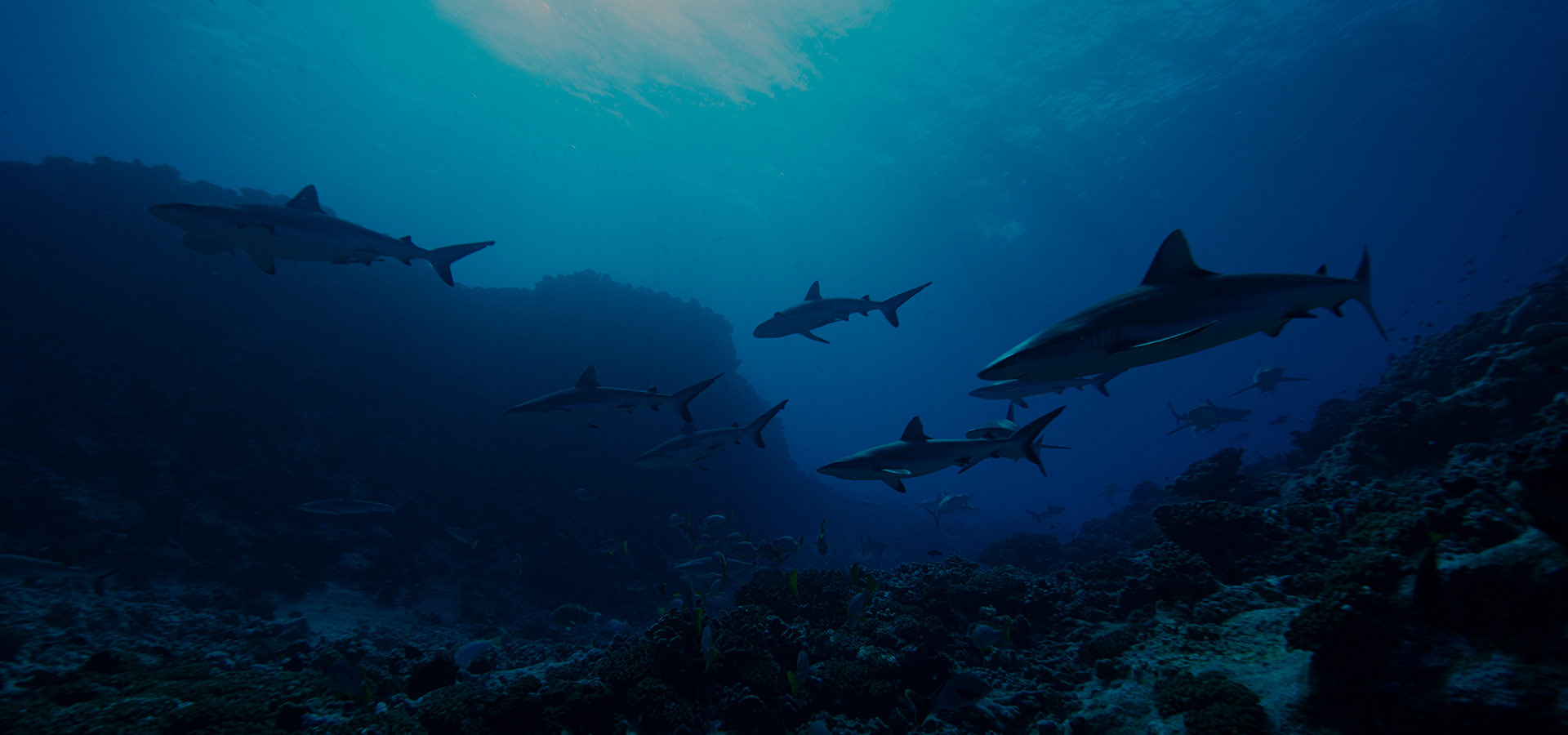Sharks of Bahrain & The Gulf
No thanks to the legacy of Steven Spielberg’s 1975 cult classic, sharks are one of the worst misunderstood predators in the animal kingdom. Although frequently cast as man-eating beasts thirsty for blood, in reality humans pose the greater threat to sharks. Shark species around the world are hunted for local consumption and trade. The situation is made worse by the inherent vulnerability of sharks to overexploitation due to their life history characteristics: slow growth, late maturation, long gestation periods and small litters. They are also, consequently, slow to recover from depletion.
A quarter of shark and ray species are threatened with extinction and up to 73 million sharks are killed each year – for a bowl of shark fin soup (Animal Welfare Institute, 2022) (See 1. under references). Already under pressure from habitat loss, coastal development, pollution and by-catch, international demand for shark meat and fins continues to drive overexploitation.
The Arabian Sea area is of no exception and shark catch can be frequently seen in the marketplace. Few or no regulatory measures currently exist in the region despite this, what is more disturbing is that the Arabian Gulf, hosts the fourth largest exporter of shark fins in the world to Hong Kong – the United Arab Emirates (UAE) (The National News. 2012. ). (See 2. under references)
In 2012, the first attempt was made to assess the health of sharks and other elasmobranchs in Bahrain through field surveys. The project was led by the Public Commission for Marine Resources, Environment & Wildlife in collaboration with the UK Shark Conservation Society. The results were unsurprisingly heartbreaking; shark populations in Bahrain are nearly depleted.
Even though a total number of 16 species of sharks were recorded during the survey, there was an almost total absence of caught mature elasmos (both at sea and in the fish markets) from the larger shark species such as Great Hammerheads, Tiger sharks, Bull sharks, and Blacktips indicating that their place is being taken over by smaller predator fish who are more tolerant in the face of fishing pressures. The efforts made during the assessment and results is documented in a little-known documentary titled ““A Short Time Dying”,” which presents the rather bleak status of sharks in Bahraini waters.
In Bahrain, only one species of saw shark, known locally as Abu Sayaf, is protected by law under Ministerial Decision (1) of 2012 | Protecting the “Abu Sayaf” shark (See 3. under references) (MD_1_2012.pdf). This species is also included in the National Redlist (Refer to National Red List page).
The good news is that the conservation movement is not dead in the water. All countries in the Arabian Sea area are signatory to at least one of either the Convention of Migratory Species (CMS), the Memorandum of Understanding (MOU) on the Conservation of Migratory Sharks or the Convention on International Trade of Endangered Species (CITES) – all of which award a degree of protection to sharks. Moreover, earlier this month, three species of thresher sharks (all of which have been identified in the neighbouring waters of the Arabian Sea), the silky shark and nine species of ray were awarded greater protection under CITES.
Meanwhile, in the UAE, one initiative stands out as champion of shark conservation across the region: The Gulf Elasmo Project. The project (named after the scientific term given to the group of cartilaginous fish species including sharks, rays and chimaeras) was born from the PhD thesis of the project’s front-runner, Dr. Rima Jabado. It aims at gaining a better understanding of elasmobranch species, abundances and distribution in the Arabian/Persian Gulf and neighbouring waters. During her initial study Dr. Jabado found at least 29 species of shark exist in the area.
‘Your Eyes on Elasmos’ is a citizen science programme spawned from the parent project that addresses a fundamental issue throughout conservation –a lack of data. Without scientifically sound and accurate data to inform the decision-making process, proper conservation measures cannot be taken. The way the programme works is simple: if you spot a shark either in the water or at landing sites, snap a picture if you can, then head to the website and fill in this form. For the hard-core enthusiast, you can also check out the “Sharks of the Arabian Sea” guide book, which gives a comprehensive list of known shark species in the Arabian Sea area. The data logged by the public will provide valuable data that will feed into other studies, conservation efforts and the decision-making process. So far the ‘Your Eyes’ initiative has received reports from the UAE, Qatar, Oman, Iran, Kuwait, Pakistan and India.
Information Sources and References
- Animal Welfare Institute. 2022. Shark Finning. [online] Available at: https://awionline.org/content/shark-finning#:~:text=Continued%20demand%20for%20shark%20fin,year%20for%20their%20fins%20alone [Accessed 29 April 2022].
- The National News. 2012. UAE is world’s fourth largest shark fin exporter. [online] Available at: https://www.thenationalnews.com/uae/uae-is-world-s-fourth-largest-shark-fin-exporter-1.446187 [Accessed 29 April 2022].
- “A Short Time Dying” (2013) Documentary, Available at: https://www.youtube.com/watch?v=ZspiErMfOe4
- Gulf Elasmo Project. Available at: http://www.elasmoproject.com/home.html
- Sharks of the Arabian Sea Identification Guide. 2015. IFAW [online] Available at: http://nebula.wsimg.com/204955193632527b06db4bea33d64bf4?AccessKeyId=5333926115E08B938E08&disposition=0&alloworigin=1
- Ministerial Decision No. (12) of 2012 on the protection of the Abu Sayaf shark species. [online] Available at: <https://www.lloc.gov.bh/HTM/RCPMW0112.htm> [Accessed 29 April 2022].



